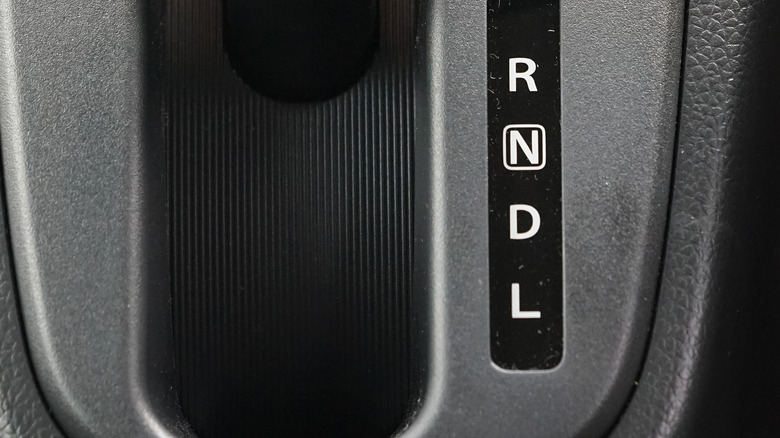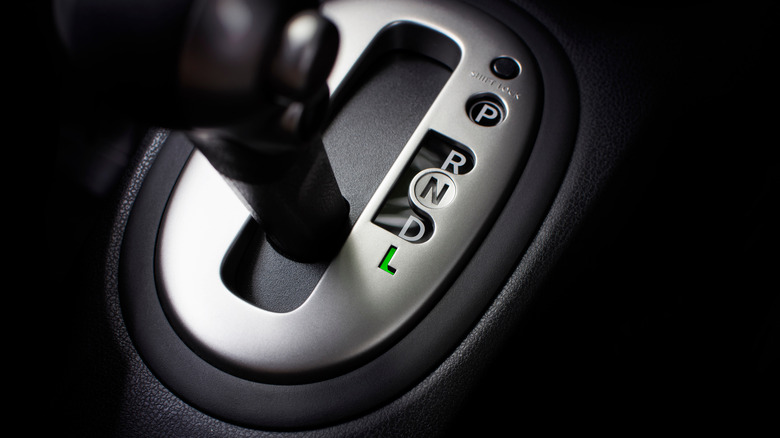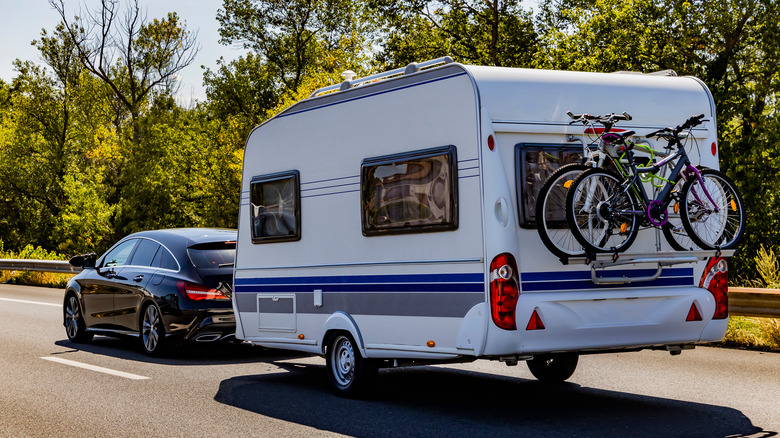How And When To Use The Low Gear In An Automatic Car
The entire reason one generally drives an automatic transmission car is so they don't have to put too much thought into that aspect of the car's operation. You put it in "Drive," you depress the gas pedal, and drive forward. That said, while sticking to the basic aspects of your automatic transmission is perfectly fine for everyday driving, many shifters have additional settings available for use in particular situations — such as the neutral gear or manual mode.
One of these extra gears can be found on your shifter in the form of either an "L" setting, or a "1" and/or "2" setting. That "L" stands for "low gear," a special setting that changes how your car's gearbox operates. What could a low gear mode be used for when you're driving a straightforward, automatic transmission? If you know how to use it, it can actually be quite the helpful feature when you're driving in certain weather or driving situations.
How to shift into low gear, and what it does
While you're usually not supposed to touch the shifter of an automatic transmission while you're in motion, the "L" or "1" setting is usually located right next to the "D" setting, so you can activate it without any excessive or dangerous shifting. To do so, just ease off the gas pedal to a slow speed, shift the selector to the side the L is on, and it'll activate automatically.
The low gear setting, as the name implies, forces your transmission to basically stay on the lower settings. This is accomplished by restricting the amount of fuel flowing from the intake into your engine. This, in turn, reduces your car's overall speed.
Why would you want to do that? Because when the gear is restricted, your car is capable of exerting more torque. Basically, when you shift into low gear, your car gets slower, but it also gets much stronger, capable of exerting more pounds of forward force, which can be especially helpful in specific vehicle scenarios, or even emergency situations.
When to shift into Low Gear
There are several driving scenarios where shifting into low gear would be beneficial for your car and, potentially, your safety — and they all generally revolve around strenuous tasks. The first scenario would be when you're towing a heavy load like a trailer or a camper. By shifting into low gear and increasing the car's torque, you make it easier to lug hefty cargo without worrying about the wheels slipping or falling down a hill.
Speaking of hills, that's the second scenario. If you're attempting to climb or descend a steep hill, shifting into low will put more power and weight behind your car, granting you greater stability and control. As an added bonus, this also reduces the need for brake-riding if you're going down a hill, which helps to reduce brake strain.
Finally, low gear is great for driving through dangerous weather. Whether it's piled-up snow or flooding roads, the additional muscle from low gear will help to keep your car grounded and steady as you make your way forward across more treacherous terrain. It might take you a bit longer to get to your destination while in low gear, but it'll increase your odds of doing so safely.


